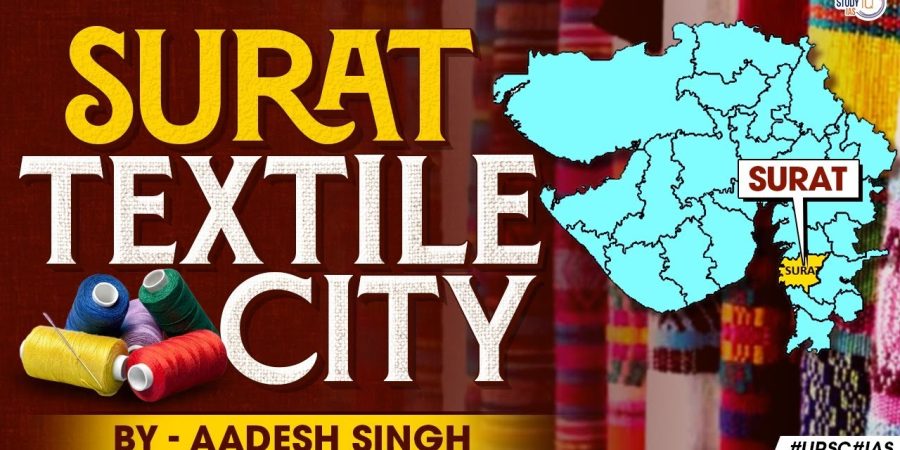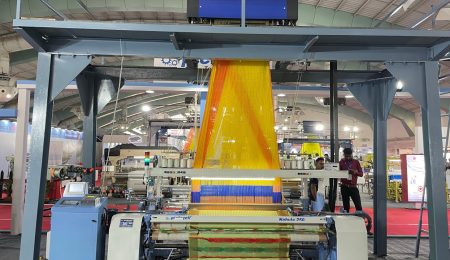The textile industry has been a cornerstone of India’s economy for centuries, contributing significantly to its GDP and employment. Among the vibrant textile hubs in India, Surat stands out as a beacon of success, boasting a rich heritage and a thriving industrial landscape. This case study delves into the strategic industrial location of Surat’s textile industry, unraveling the economic, geographic, and socio-cultural factors that have propelled its growth and prosperity.
Economic Dynamics
Surat’s textile industry is emblematic of India’s economic resilience and entrepreneurial spirit. With a robust network of textile mills, power looms, and garment units, Surat has established itself as a global textile powerhouse. The city’s economic prosperity can be attributed to several factors:
- Diverse Textile Portfolio: Surat offers a diverse range of textile products, including synthetic fibers, sarees, dress materials, and embroidered fabrics. This diverse portfolio enables the industry to cater to a broad spectrum of domestic and international markets, ensuring sustained demand and profitability.
- Cost Competitiveness: Surat’s textile industry benefits from cost competitiveness, driven by factors such as abundant labor supply, access to raw materials, and efficient supply chain management. This cost advantage has positioned Surat as a preferred destination for textile manufacturing, attracting investment and fostering industrial growth.
- Innovative Practices: The industry in Surat has embraced innovation and technology, adopting modern manufacturing techniques and machinery to enhance productivity and quality. Additionally, the entrepreneurial spirit of Surat’s textile entrepreneurs has led to the development of innovative designs and marketing strategies, further consolidating the city’s competitive edge in the global textile market.
Geographic Advantage
Surat’s strategic geographic location has played a pivotal role in shaping its textile industry. Situated in the state of Gujarat, Surat enjoys proximity to major ports, transportation networks, and key markets, facilitating seamless trade and commerce. The city’s geographic advantage is characterized by:
- Port Connectivity: Surat is located near the ports of Hazira and Dahej, which serve as crucial gateways for international trade. This proximity enables efficient import of raw materials such as yarn, dyes, and chemicals, as well as export of finished textile products to global markets.
- Access to Domestic Markets: Surat’s strategic location within India provides easy access to major domestic markets such as Mumbai, Delhi, and Ahmedabad. This proximity reduces transportation costs and lead times, enabling manufacturers to cater to the vast Indian consumer base effectively.
- Infrastructure Development: The Government of Gujarat has undertaken significant infrastructure development initiatives, including the construction of highways, railways, and industrial parks, to support the growth of Surat’s textile industry. These infrastructure investments have enhanced connectivity, logistics, and operational efficiency, fostering a conducive environment for industrial development.
Socio-Cultural Influences
Surat’s textile industry is deeply intertwined with its socio-cultural fabric, reflecting the city’s rich heritage and ethos. The industry’s socio-cultural influences are evident in the following aspects:
- Skilled Artisans: Surat boasts a skilled workforce comprising artisans, weavers, dyers, and designers who possess generations of traditional knowledge and craftsmanship. These artisans play a crucial role in preserving cultural heritage and producing exquisite textile creations that are revered both domestically and internationally.
- Community Cohesion: The textile industry in Surat is characterized by strong community ties and collaborative networks. Families and communities often specialize in specific textile processes or products, fostering a sense of camaraderie and collective prosperity within the industry.
- Cultural Festivals and Events: Surat celebrates its textile heritage through various cultural festivals and events, showcasing the city’s artistic prowess and creative ingenuity. Events such as the Surat International Textile Expo attract industry stakeholders, buyers, and enthusiasts from around the world, promoting trade, cultural exchange, and collaboration.
The success of Surat’s textile industry is a testament to the synergy between economic, geographic, and socio-cultural factors. By leveraging its diverse portfolio, geographic advantage, and socio-cultural heritage, Surat has emerged as a global textile hub, driving economic growth, employment generation, and social development. This case study offers valuable insights for UPSC General Studies aspirants, highlighting the multidimensional dynamics of industrial locations and the role of textile industries in shaping economies and societies. As India continues its journey towards industrialization and globalization, Surat’s textile industry serves as a beacon of inspiration and aspiration for aspiring entrepreneurs, policymakers, and scholars alike.
Supplier or Manufacturer from India? Register FREE and List Your products





Leave feedback about this